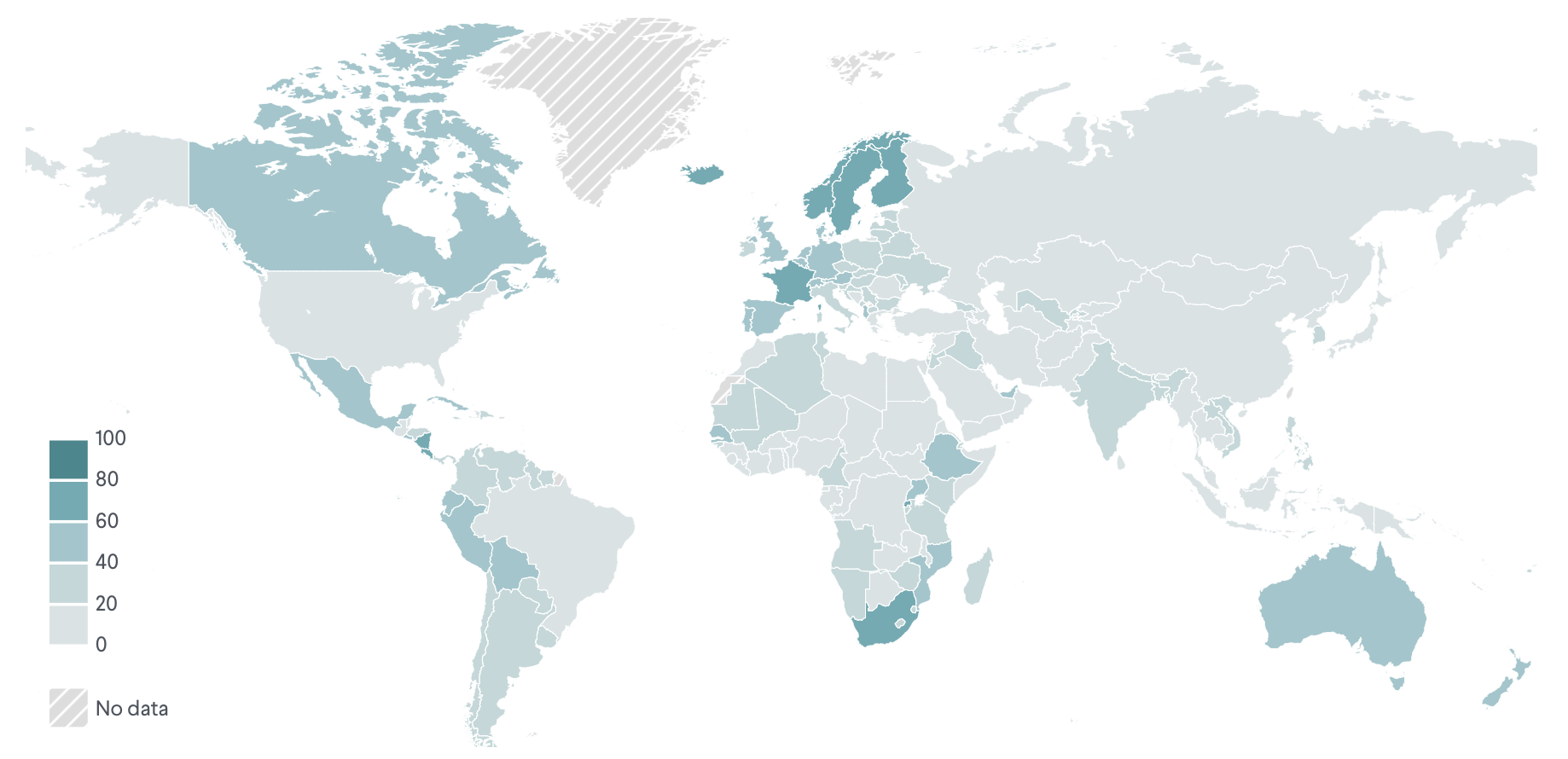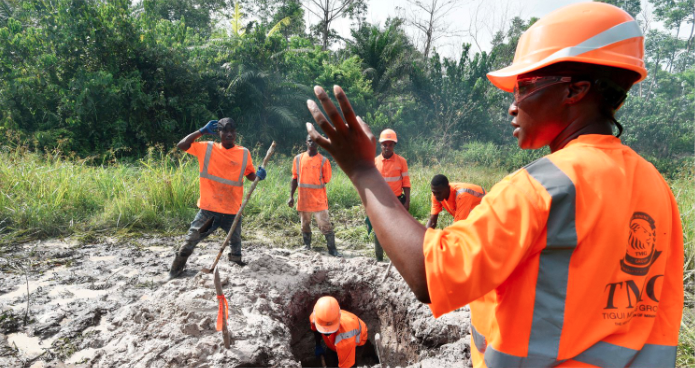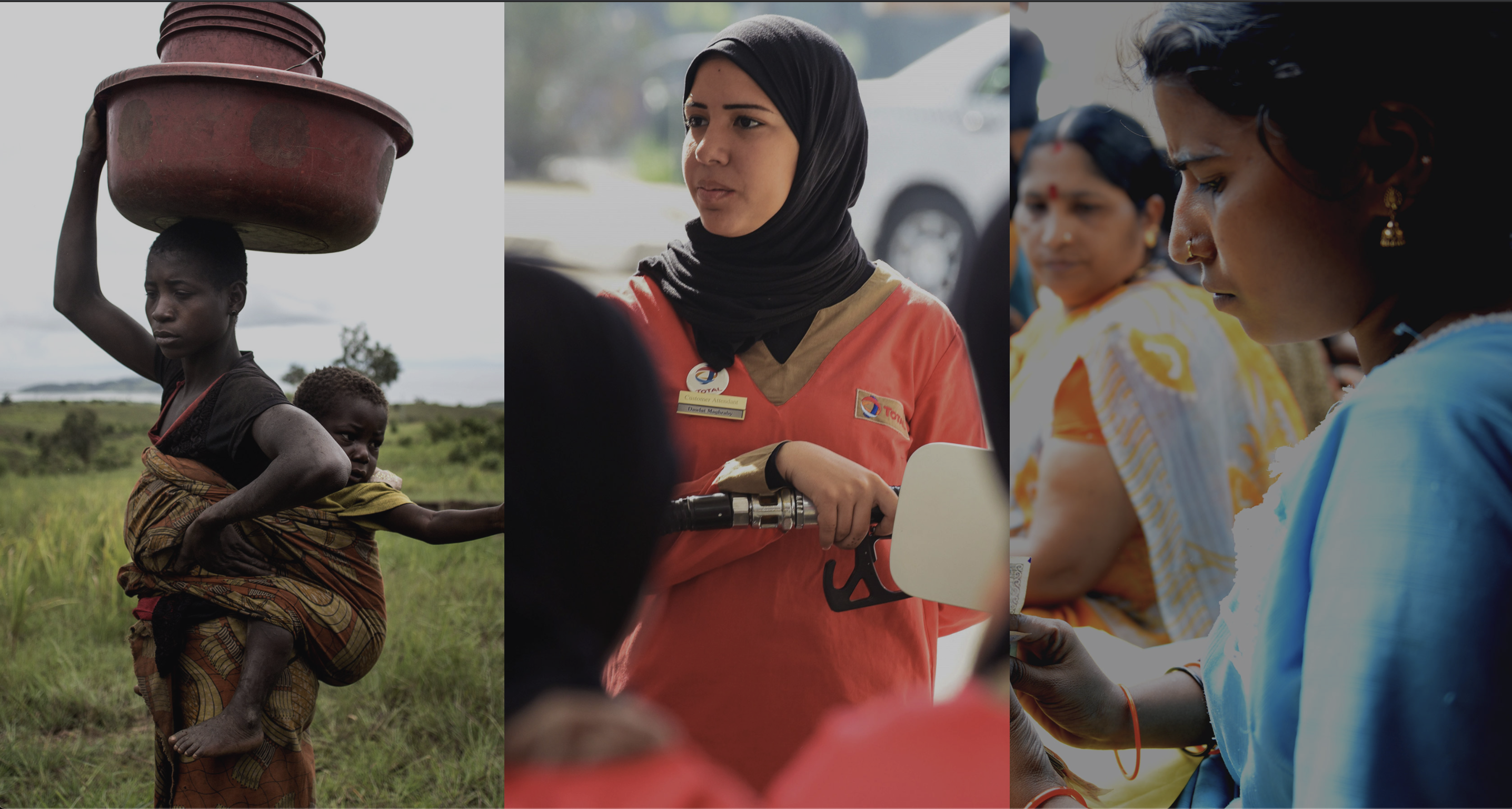Women served in official roles in both the government and opposition delegations.
Civil society groups supported the peace process by gathering critical input from across ethnic and regional lines, promoting a broad agenda for reform, and building public support. Women’s groups led public marches against the military’s insurgency campaign, promoted postconflict stability by organizing campaigns for disarmament, and helped reintegrate former combatants.
Guatemala’s 1996 peace accords concluded a bloody thirty-six-year civil war. The negotiated cease-fire reached between government forces and leftist insurgent groups ended a conflict in which over two hundred thousand civilians—primarily indigenous Mayans—were killed or forcibly disappeared and hundreds of thousands of people were displaced. In the early 1980s, at the height of the conflict, over 6,000 armed combatants fought a guerrilla war, supported by between 250,000 and 500,000 loyalists to the four principal guerrilla groups involved. In response, the government instituted a “scorched earth” campaign, carrying out extrajudicial killings, disappearances, mass rape, and torture. Steps toward peace talks started in the mid-1980s, and a process was formally launched in 1991 under the auspices of the United Nations, with representatives from the principal guerrilla group, the Unidad Revolucionaria Nacional Guatemalteca (URNG), the Guatemalan government, military, and civil society. A final comprehensive peace accord was signed by the URNG and Guatemalan President Alvaro Arzu’s government on December 29, 1996.
Leading up to the signing of the 1996 accords, women made up 13 percent of negotiating teams (one of four government negotiators but zero of four URNG negotiators) and 25 percent (one of the four delegates) for the URNG political and diplomatic commission. Civil society organizations—including women’s groups—were active in the Civil Society Assembly (ASC) and supported the process by gathering critical input from across ethnic and regional lines, promoting a broad agenda for reform, and building public support.
- Women
- Men
women
women
women
Women made a difference in the Guatemalan peace efforts in four ways.
Broadened the agenda. Participants in the ASC’s women’s sector promoted a wide agenda, including land tenure reform, social justice, economic opportunity, return of refugees, and gender-based violence. These proposals addressed the core grievances of rural Guatemalans that had ignited the conflict, thereby increasing the likelihood of a sustainable agreement.
Worked across lines. To advance reforms, women forged strategic alliances with other sectors of the ASC and achieved consensus across ethnic, geographic, economic, and political divides. They did so by drawing on their diverse networks: the ASC’s women’s sector included members from different sections of Guatemala’s population that had been affected by the conflict, including ethnic Mayan and rural communities, students, human rights activists, and trade unions.
Staged mass action. Women’s groups led public marches that gathered thousands of people to protest the military’s brutal insurgency campaign and urge progress in peace talks. They helped to bridge the geographic distance between where peace talks were held and where many of those most affected by the conflict lived, ensuring that crucial constituents felt more represented in the process.
Aided disarmament. Within local communities, women promoted postconflict stability by organizing campaigns for disarmament and successfully encouraging neighbors to give up their weapons, as well as by developing strategies to help former fighters move into productive work.
“The Guatemalan Peace Accords are well known because of their bold gender approach. Women’s economic, political, and social rights were included in majority of the accords. This is the result of the direct participation of women, strengthened with gender awareness, at both the Assembly of Civil Society and the peace table even though deeply under-represented in this last space.”
— Luz Mendez, delegate to the URNG Political-Diplomatic Team
Although certain provisions of the peace accords were successfully implemented—such as demobilization, refugee return, and ex-combatant reintegration—little progress has been made in addressing the root causes of instability, including the impoverishment and exclusion of indigenous communities. High levels of crime and instability persist, including gang activity, drug and human trafficking, and violence against women and children; impunity and corruption are rampant. Guatemala’s history of sexual violence during the civil war contributed to the normalization of abuse, reflected by high levels of gender-based violence and female murder that persist today.
In response, women are working to bring those responsible for mass human rights abuses to justice and to strengthen the criminal justice system. Claudia Paz y Paz Bailey, the nation’s first female attorney general, sought to decrease impunity during her 2010–14 term; in addition, a female judge presided over the historic 2016 Sepur Zarco trial, which was the first Guatemalan prosecution of conflict-related sexual violence. Women also have served on truth commissions, assisted prosecutors, and provided witness testimonies about abductions and systematic sexual violence. Their work to improve the rule of law will address some of the underlying causes of Guatemala’s instability and contribute to long-term security.






